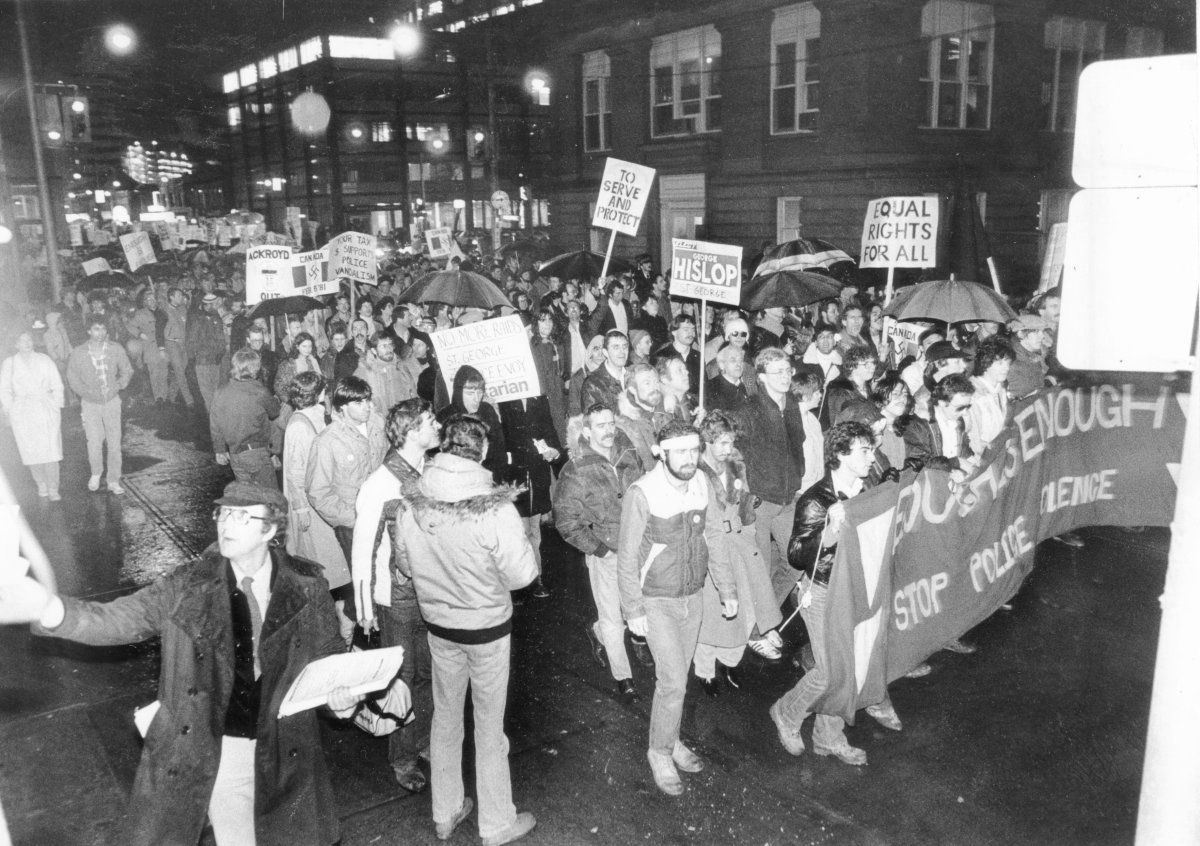
On this episode of What happened to…? Erica Vella revisits the Toronto bathhouse raids that sparked massive protests and marked a turning point for the Queer community.
On February 5, 1981, Toronto Police launched Operation Soap. Officers ambushed four Toronto bathhouses in a series of coordinated raids.
The raids followed a six-month investigation, which led to almost 300 patrons being arrested on the street.
Ron Rosenes was at the Roman Baths on the night of the raids.

Get breaking National news
“There was pounding on the doors. I opened the door to face a police officer who basically said, ‘Get dressed and come to come to the front.’ As I recall, I was given a few minutes to grab my clothes. I met my cousin in the front hallway, but we were pretty roughly rounded up by the police,” he said.
“My heart was racing. … it was it’s all a bit of a blur, but everybody was gathered together and then we were processed finally at a local one of the local police divisions.”
- Carjacking suspect who allegedly stole Roxy the dog to turn 40 behind bars
- Toronto hospital left without heat or hot water cancels non-essential activities
- Toronto man who killed girlfriend in act of ‘unthinkable’ violence gets life in prison
- Conservationists eager to see plan to save rare eastern wolf found in Quebec, Ontario
The raids were a watershed moment for Toronto’s Queer community.
“Those bathhouses were safe spaces, safe places for us to go and meet other individuals. And they did physical damage to the property, and that physical damage was like physical damage to people,” said Dennis Findlay, a community activist,.
Following the raids, thousands of activists protested along the streets of Toronto and decided to fight the attacks in court.
“Something had happened in our city. This was not a small event. They may have arrested 300 people, but 3,000 people came out and said, ‘No, this is wrong.’,” Findlay said.
Activists eventually formed a group called the Right to Privacy Committee. The group aimed to fight back against police harassment of gay men and other queer people.
Findlay said the Right to Privacy Committee successfully defended 87 per cent of cases during the years-long trial process.
“It became fairly obvious that the judges agreed that this was inappropriate,” Findlay said. “This was a colossal mess of millions of dollars wasted.”
Government apologies followed soon after, but historian and York University professor Tom Hooper said more needs to be done to fix the wrongs of the past.
“This is just an act, this whole apology process has been an act,” Hooper said. “It’s been fuel for press conferences and celebrations instead of actually doing the hard work on the ground.”
On this episode of What happened to…? Erica Vella speaks with members of the Queer community about the 1981 Toronto bathhouse raids. She learns about the public’s response, and ultimately, how communities came together to create lasting change.







Comments